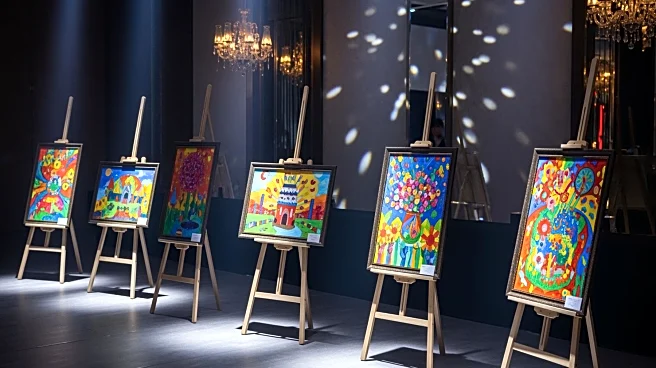What's Happening?
Rachel Griffin-Accurso, widely recognized as Ms. Rachel, attended the Glamour Women of the Year Awards 2025 in New York City, wearing a custom gown adorned with artwork created by children from Gaza. The dress, designed by Risa Kostis, featured a cape
and train embroidered with colorful drawings of doves and landscapes, crafted by L.W. Pearl Atelier. Griffin-Accurso highlighted the young artists, naming Ahmed, Luna, and Rama among others, and expressed her honor in showcasing their work. The event celebrated women from various fields, including culture, politics, and sports, with Griffin-Accurso being one of the honorees.
Why It's Important?
The inclusion of Gaza children's artwork in a high-profile event like the Glamour Women of the Year Awards underscores the importance of cultural exchange and recognition of young talent from conflict-affected regions. By spotlighting these children's creativity, Griffin-Accurso not only honors their artistic contributions but also raises awareness about the challenges faced by children in Gaza. This gesture can foster empathy and support for initiatives aimed at improving the lives of children in such areas, potentially influencing public policy and charitable efforts focused on education and cultural development.
What's Next?
Griffin-Accurso's decision to feature Gaza children's artwork may inspire other public figures to engage in similar acts of cultural recognition, potentially leading to increased visibility and support for artists from marginalized communities. The event could also prompt discussions among stakeholders in the fashion and entertainment industries about the role of art in social advocacy. As Griffin-Accurso continues to share stories of these young artists, there may be opportunities for collaborations or exhibitions that further highlight their work and stories.
Beyond the Headlines
The use of children's artwork from Gaza in a prestigious event highlights the ethical dimension of art as a tool for social change. It raises questions about the responsibilities of artists and public figures in advocating for vulnerable populations. This act of cultural diplomacy can contribute to long-term shifts in how art is perceived as a medium for peacebuilding and international understanding, encouraging more inclusive narratives in global media.















